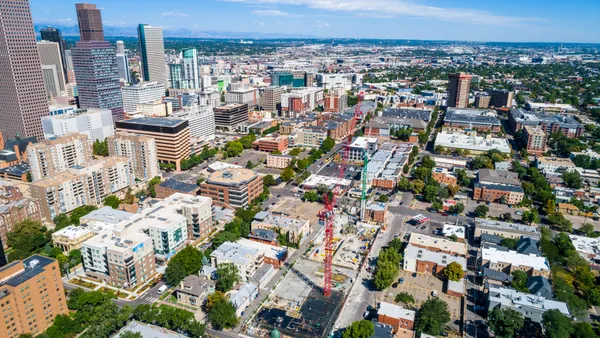A 1906 earthquake and fire devastated San Francisco but helped lead to an innovation that has celebrated its 100th anniversary: the city’s hydroelectricity power program.
Damage from the fire was exacerbated by the city’s insufficient water supply. To solve that problem, San Francisco prevailed on the federal government to build and operate a water conveyance and hydroelectric system in Yosemite National Park. That became the Hetch Hetchy Water and Power system, owned and operated by the San Francisco Public Utilities Commission (SFPUC).
The system celebrated its 100th anniversary on May 6, having initially used hydroelectricity to help construct the O’Shaughnessy Dam and then expanded into wider city use as San Francisco grew. "It was really driven by a need for San Francisco to have a reliable water supply as it was a growing economic force in the West," Barbara Hale, assistant general manager for power at SFPUC, told Smart Cities Dive in an interview.
Through hydroelectricity, San Francisco serves its city and county facilities, including two hospitals, its water and wastewater plants, public transit agencies, office buildings, jails and libraries. Currently, Hale said, it serves about 150 megawatts of customer load. "As San Francisco has grown, our government services have grown and our thirst for power for those facilities has grown,” she said.
It means power used at city facilities are 100% greenhouse gas (GHG)-free, and in the past year has saved the equivalent in emissions of nearly 38,000 car trips driven annually. And without the hydroelectricity program, Hale said departments would collectively be paying around $40 million more each year for electricity — and it would not be as environmentally friendly.
The gravity-fed system takes drinking water throughout the Bay Area through several power houses, and generates electricity as it travels through the region to various reservoirs. “We put our water to work here in San Francisco,” Hale said.
In the coming years, Hale said SFPUC wants to make greater use of hydroelectricity to power more homes and businesses, starting with new developments on redeveloped brownfield sites, which will be GHG-free like government buildings.
That will help interim Mayor Mark Farrell’s goal of reaching zero GHG emissions citywide, announced last month, which includes planting 1,000 new trees each year. The city is one of 25 from across the world to pledge to accelerate their emission reduction plans, just under a year after President Trump announced the United States would pull out of the Paris climate accord. "With the Trump Administration displaying a stunning lack of guidance on climate change, it is up to cities such as San Francisco to take the leadership mantle of this critical issue," Farrell said in a statement.
Hale said SFPUC has "a lot of pride" in its system, and other innovations at the time, which included using floodlights so crews could work on building the system around the clock. “[We] continue to see ourselves as innovators in how we provide service to our rate-payers in a cost-effective financially responsible way,” she said.












